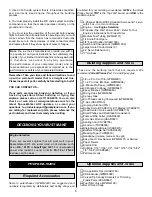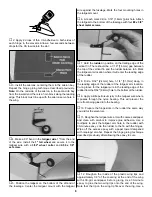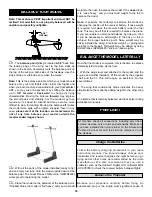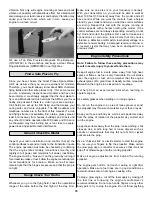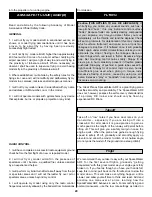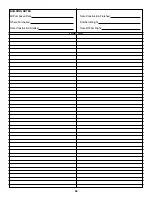
❏
2. Cut out the
windshield
along the cut lines and glue it
to the fuselage. Use rubber bands or masking tape to hold
it in position until the glue dries. We recommend a glue
specifically formulated for gluing canopies such as Pacer
“Formula 560” canopy glue. Formula 560 is like regular
white glue (aliphatic resin) in that it dries clear and cleans
up with water, but sticks well to butyrate and completely
dries overnight.
❏
3. Glue the
scale fuel level fairing
on top of the
fuselage, centered between the windshield and cowl.
❏
4. Apply a small bead of canopy glue along the edge of
the cockpit. Fit the black
cockpit coaming
all around the
edge of the cockpit and wipe off any excess glue before
it dries.
❏
5. We used a Williams Brothers 1/4 scale old time pilot
#62500 raised up with a 1/2" [12.7mm] block of wood. Paint
the pilot, and after the paint has dried use 6-minute epoxy
and two #4 x 1/2" sheet metal screws (not included) to
mount the pilot to the cockpit floor.
The throws are measured at the widest part of the
elevators, rudder and ailerons. Adjust the position of the
pushrods at the servo horns to control the amount of throw.
You may also use the ATV’s if your transmitter has them,
but the mechanical linkages should still be set so the ATV’s
are near 100% for the best servo resolution (smoothest,
most proportional movement).
We recommend the following control surface throws:
High Rate
Low Rate
Elevator:
1" [25.4mm]
5/8" [16mm] up and down
Rudder:
1-3/4" [45mm]
1-3/4" [45mm] left and right
Ailerons:
1-1/4" [31.75mm] 1" [25.4mm] up and down
Note:
If your radio does not have dual rates, we recommend
setting the throws at the low rate setting. The balance and
control throws for the SpaceWalker ARF have been
extensively tested. This chart indicates the settings at
which the SpaceWalker ARF flies best. Please set up your
model to the specifications listed above. If, after you
become comfortable with your SpaceWalker ARF, you
would like to adjust the throws to suit your tastes, that’s
fine. Too much throw can force the plane into a stall or
snap roll, so remember, “more is not always better.”
4-CHANNEL
TRANSMITTER
4-CHANNEL
TRANSMITTER
4-CHANNEL
TRANSMITTER
4-CHANNEL RADIO SET-UP
(STANDARD MODE 2)
TRANSMITTER
4-CHANNEL
ELEVATOR MOVES UP
RIGHT AILERON MOVES UP
LEFT AILERON MOVES DOWN
RUDDER MOVES RIGHT
CARBURETOR WIDE OPEN
SET THE CONTROL THROWS
17

